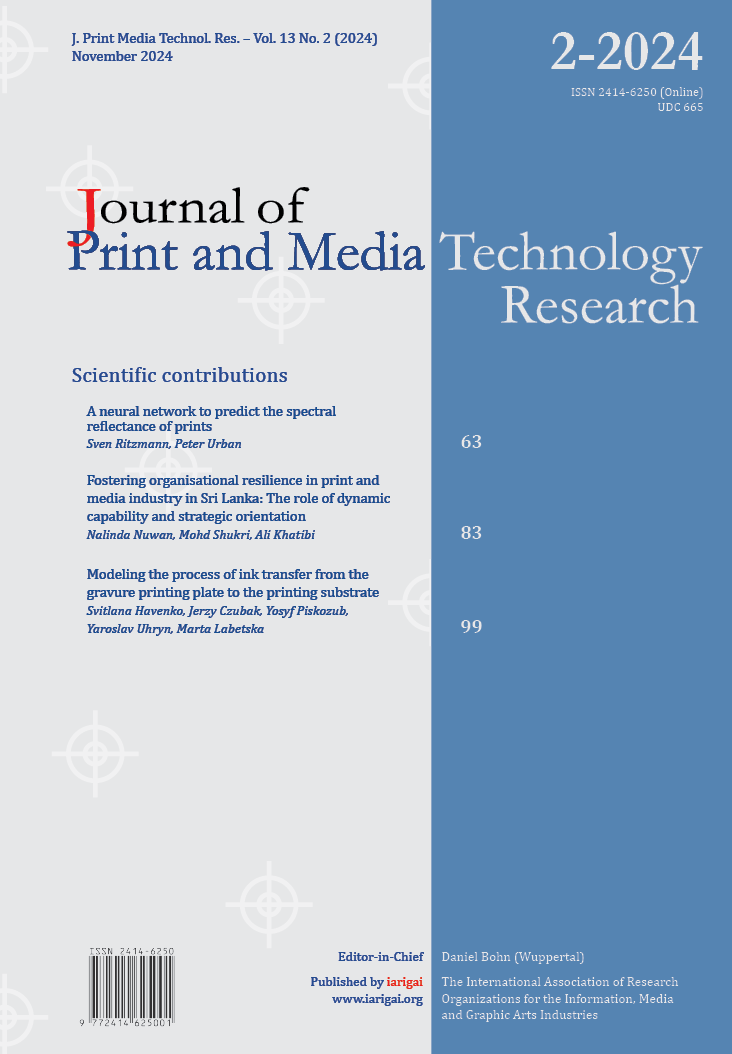Modeling the process of ink transfer from the gravure printing plate to the printing substrate
Main Article Content
Abstract
The article presents a mathematical model of imprint formation in gravure printing on cardboard substrates. The focus is on ensuring imprint quality by balancing interactions between the structural subsystems of the printing press, specifically the plate cylinder, ink, printing system, and substrate. Using mathematical models, the behavior of the printing substrate and printing plate elements system is investigated by determining the stress–strain state of the contacting elements during imprint formation. The study describes the ink transfer process from the gravure printing plate to the substrate, considering factors such as substrate weight and structure, technical characteristics of the printing press, and its structural subsystems. The method for calculating printing pressure is also examined. At higher printing speeds and pressures, cylinder coatings can be damaged, leading to overheating and cracking,which necessitates cylinder cooling. Increased press width requires greater pressure to achieve the desired contact area, causing cylinder deflection and uneven pressure distribution, affecting image quality and color matching.Morphological analysis confirmed the significant influence of the printing and inking systems of web-fed gravure presses on pressure distribution in the printing zone. The stress–strain state of objects in direct contact is a key factor in imprint quality. Therefore, studying the micromechanics of contacting surfaces during printing is crucial for high-quality images. Mathematical modeling allows calculation and control of the load in the contact zone between the substrate and ink-filled printing elements, ensuring the quality of gravure imprints on various materials.
Article Details

This work is licensed under a Creative Commons Attribution-NonCommercial 4.0 International License.
